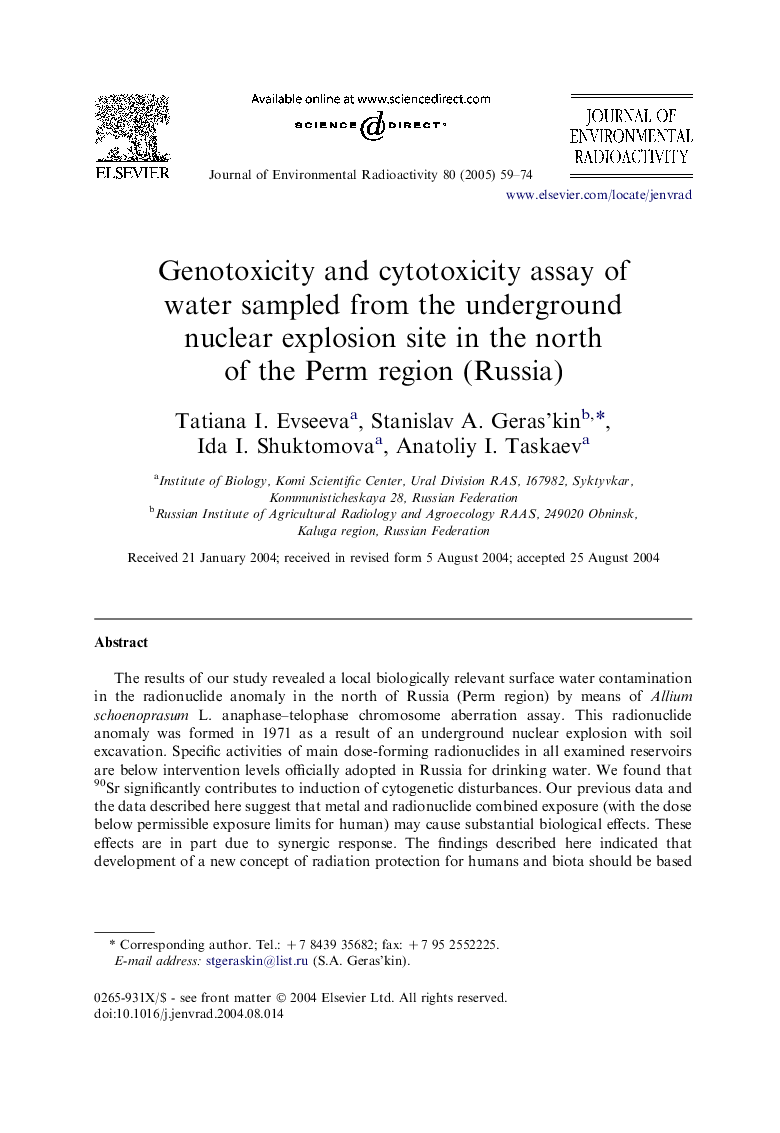| Article ID | Journal | Published Year | Pages | File Type |
|---|---|---|---|---|
| 10686885 | Journal of Environmental Radioactivity | 2005 | 16 Pages |
Abstract
The results of our study revealed a local biologically relevant surface water contamination in the radionuclide anomaly in the north of Russia (Perm region) by means of Allium schoenoprasum L. anaphase-telophase chromosome aberration assay. This radionuclide anomaly was formed in 1971 as a result of an underground nuclear explosion with soil excavation. Specific activities of main dose-forming radionuclides in all examined reservoirs are below intervention levels officially adopted in Russia for drinking water. We found that 90Sr significantly contributes to induction of cytogenetic disturbances. Our previous data and the data described here suggest that metal and radionuclide combined exposure (with the dose below permissible exposure limits for human) may cause substantial biological effects. These effects are in part due to synergic response. The findings described here indicated that development of a new concept of radiation protection for humans and biota should be based on the clear understanding of biological effects of low doses of radiation in chronic exposure to multi-pollutant mixtures.
Related Topics
Physical Sciences and Engineering
Energy
Nuclear Energy and Engineering
Authors
Tatiana I. Evseeva, Stanislav A. Geras'kin, Ida I. Shuktomova, Anatoliy I. Taskaev,
